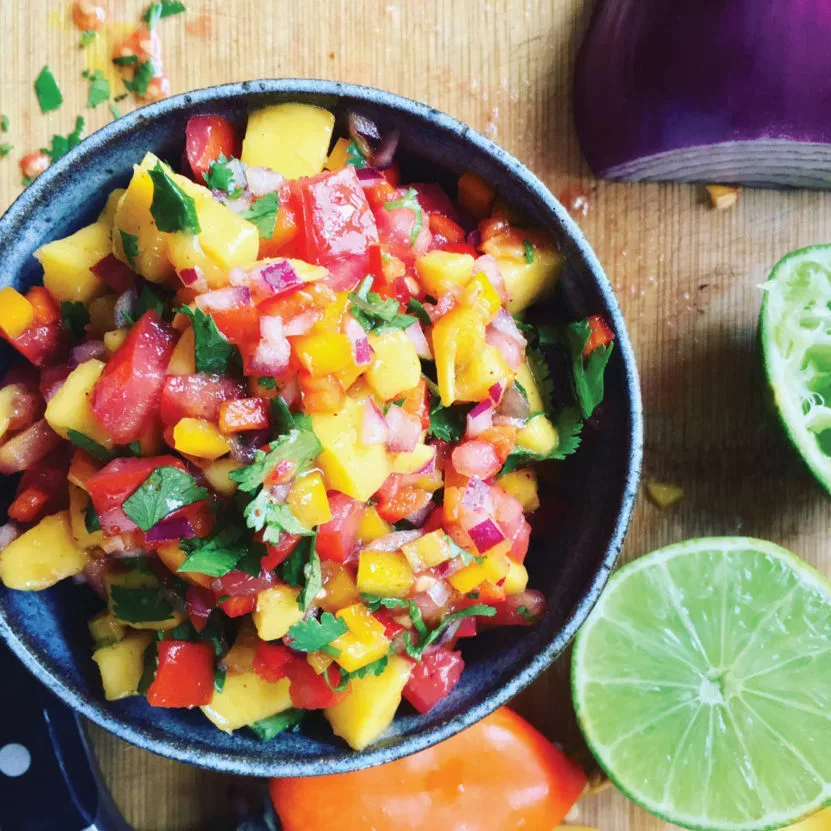
Ask the Nutritionist: Mango a Mango
Dear Nutritionist: I am trying to find creative ways to use mango. Can you please give me your best nutrition tips and recipe inspiration?
Mangoes Are Very Versatile
Besides being super tasty, mangoes are a source of the antioxidant-rich vitamins C and A, as well as folate and potassium. One cup of diced mango provides 100 percent of your daily vitamin C and 35 percent of your daily vitamin A needs. Plus, if you find ripe mangoes in your grocery store there are more ways than one to eat them. Mangoes are a great way to sweeten a recipe without using sugar due to their creamy flesh that is easily blended, sliced, or diced into a wide variety of recipes. You can find mangoes used in everything from salsa, to dressings, to desserts.
Hunting for the Perfect Mango
Before you go hunting for the perfect mango, you must first know how you want to use the mango. There are two types you generally find in the grocery store, manila and ataulfo. The manila is larger in size, and both yellow-orange and green in color. The flesh is firm, lightly sweet and tart, and juicy. However, if they are too ripe their fibers can easily get stuck in your teeth. They have a large pit, but provide a lot of fruit flesh for larger recipes. Manila are the best for immediate snacking, dicing into salsas, or slicing into salads, as they tend to be more resistant to bruising. For summer snacking, simply cut the manila mango on either side of the seed and cut the “cheeks” into slices. Eat these like you would a melon.
The ataulfo on the other hand is much smaller in size, more delicate and softer to the touch, and generally a golden yellow color. They are like nature’s sugar packet. The flesh is very creamy, tender, and mostly free of fibers. This mango is great when blended or pureed to naturally sweeten desserts, dressings, or smoothies. If you find a more firm ataulfo it can also be used in salads or salsas. I personally love a small slice of ataulfo mango in fresh rolls or simply paired with ripe avocado slices for a transcending tropical dessert.
However, mangoes may not be for everyone due to their high fructose content. Some individuals have either a genetic or conditional fructose intolerance which may lead to GI distress if consumed in large amounts. If you are struggling with a fructose intolerance, or are currently following a low FODMAP diet, then mangoes are best avoided or enjoyed in small amounts. Replace mango with other tropical favorites like pineapple or papaya.
My Favorite Ways to Use Mango
- Dice up into a salsa
- Blend into a dressing
- Whip up with Greek yogurt
- Roll up in fresh rolls
- Pair with avocado
- Cut up like a melon
- Throw into a salad
- Blitz into a smoothie
- Drizzle with lime juice and coconut milk
- Stir into chia pudding
- Heat up with a pinch of cayenne
- Freeze into popsicles
